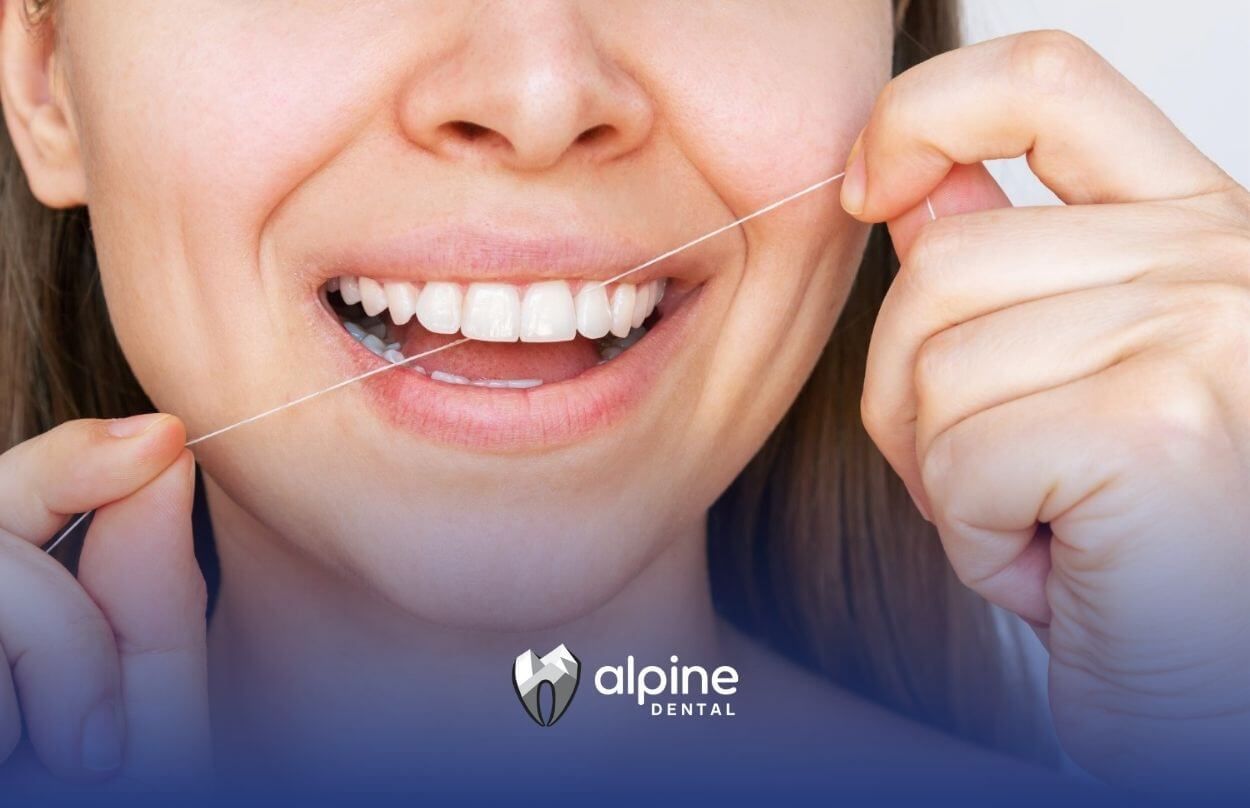What Happens During Deep Dental Cleaning? A Complete Guide
A healthy smile is built on a strong foundation—your gums. But sometimes, even with the best brushing and flossing habits, plaque and tartar can sneak below the gum line, putting your oral health at risk. That’s where deep dental cleaning comes in. If you’ve been told you need this treatment, you might be wondering: what happens during deep dental cleaning? At Alpine Dental in New Jersey, we believe in empowering our patients with clear, comprehensive information. Here’s your in-depth guide to what happens during deep dental cleaning, why it’s important, what to expect, and how to care for your mouth afterward.
Understanding Deep Dental Cleaning
Deep dental cleaning, also known as scaling and root planing, is a specialized procedure designed to treat gum disease by removing plaque, tartar, and bacteria from below the gum line and smoothing the roots of your teeth. Unlike routine cleanings, which focus on the visible surfaces of your teeth, deep dental cleaning targets the areas that regular brushing and flossing can’t reach.
Why Is Deep Dental Cleaning Needed?
Gum disease, or periodontal disease, occurs when plaque and tartar build up below the gum line, causing inflammation, infection, and eventually, bone loss if left untreated. When pockets form between your teeth and gums, they become breeding grounds for bacteria. Deep dental cleaning is the gold standard for stopping gum disease in its tracks and restoring gum health.
What Happens During Deep Dental Cleaning?
Let’s break down exactly what happens during deep dental cleaning, step by step:
1. Initial Assessment and Diagnosis
- Comprehensive Exam: Your dentist or hygienist will begin with a thorough oral examination, checking the health of your gums and teeth.
- Measuring Pocket Depths: A small probe is used to measure the depth of the pockets between your teeth and gums. Pockets deeper than 3mm may indicate gum disease and the need for deep dental cleaning.
- X-rays: Dental X-rays may be taken to assess bone loss and the extent of infection.
2. Local Anesthesia for Comfort
- Numbing the Area: To ensure your comfort, a local anesthetic is often administered to numb the gums and surrounding tissues. This makes the procedure virtually painless for most patients.
- Sedation Options: For patients with dental anxiety, sedation may be offered to help you relax during the procedure.
3. Scaling: Removing Plaque and Tartar
- Above and Below the Gum Line: Using specialized hand tools and/or ultrasonic scalers, your dental professional will meticulously remove plaque and tartar from the surfaces of your teeth and below the gum line, right down to the root surfaces.
- Ultrasonic Scalers: These devices use gentle vibrations and a water spray to break up and wash away stubborn deposits, especially in hard-to-reach areas.
- Manual Scaling: Hand-held scalers are used to ensure all debris is removed, especially around dental restorations or tight spaces.
4. Root Planing: Smoothing the Tooth Roots
- Smoothing Rough Surfaces: After scaling, the roots of your teeth are smoothed (planed) to remove any remaining bacteria and toxins.
- Promoting Gum Reattachment: Smoother roots make it harder for bacteria to stick and encourage your gums to reattach to your teeth, reducing pocket depth and promoting healing.
5. Antibacterial Treatments (If Needed)
- Antibiotic Gel or Rinse: Sometimes, an antibiotic gel is applied directly to the cleaned areas to kill any lingering bacteria.
- Oral Antibiotics: In certain cases, a prescription for oral antibiotics or a special mouth rinse may be given, especially if you have a compromised immune system.
6. Multiple Appointments
- Treating One Side at a Time: Deep dental cleaning is often performed in two or more appointments, treating one half of your mouth at each visit. This allows for thorough cleaning and minimizes discomfort.
What Happens During Deep Dental Cleaning: The Patient Experience
- Minimal Discomfort: Thanks to local anesthesia, most patients experience little to no pain during the procedure. Some may feel mild pressure or vibration from the instruments.
- Post-Procedure Sensitivity: It’s normal to have some tenderness, gum soreness, or sensitivity to hot and cold for a few days after treatment.
- Mild Bleeding: Slight bleeding during brushing or flossing may occur for a day or two.
Aftercare: What Happens After Deep Dental Cleaning?
Proper aftercare is crucial for healing and maintaining results. Here’s what to expect and how to care for your mouth:
- Avoid Eating Until Numbness Wears Off: This prevents accidental biting of your cheeks or tongue.
- Gentle Oral Hygiene: Brush and floss gently, especially around treated areas. Use a soft-bristled toothbrush and consider a desensitizing toothpaste.
- Rinse as Directed: Your dentist may recommend a saltwater rinse or a special mouthwash to reduce bacteria and promote healing.
- Pain Management: Over-the-counter pain relievers like ibuprofen can help manage discomfort.
- Soft Foods: Stick to soft foods for a day or two to avoid irritating your gums.
- Avoid Smoking and Alcohol: These can slow healing and increase the risk of infection.
- Follow-Up Appointments: Attend all scheduled follow-ups so your dentist can monitor healing and ensure the infection is under control.
Benefits of Deep Dental Cleaning
Understanding what happens during deep dental cleaning also means recognizing its many benefits:
- Reduces Inflammation and Infection: By removing bacteria below the gum line, deep dental cleaning helps your gums heal and reduces the risk of further damage.
- Prevents Tooth and Bone Loss: Treating gum disease early can save your teeth and preserve jawbone structure.
- Improves Breath and Oral Health: Removing tartar and bacteria leads to fresher breath and a healthier mouth.
- Enhances Smile Appearance: Healthier gums and teeth look better and feel better.
Risks and Side Effects
While deep dental cleaning is safe and effective, it’s important to be aware of possible side effects:
- Temporary Sensitivity: Teeth may be sensitive to temperature changes for a few days or weeks.
- Gum Soreness: Mild soreness or swelling is common and usually resolves within a week.
- Gum Recession: In rare cases, gums may recede slightly after cleaning, exposing more of the tooth root.
- Infection Risk: For patients with weakened immune systems, there’s a small risk of infection, which is why antibiotics may be prescribed.
- Nerve Damage: Extremely rare, but possible if the roots are very close to nerves.
What Happens During Deep Dental Cleaning: Step-by-Step Summary
| Step | What Happens |
|---|---|
| Initial Assessment | Exam, pocket measurement, X-rays |
| Local Anesthesia | Numbs area for comfort |
| Scaling | Removes plaque/tartar above and below gum line |
| Root Planing | Smooths roots, removes bacteria |
| Antibacterial Treatment | May apply antibiotics or prescribe rinses |
| Multiple Appointments | Usually treats half the mouth per visit |
| Aftercare | Gentle oral hygiene, pain management, follow-up visits |
Conclusion
If you're considering deep dental cleaning, it's important to find a clinic that specializes in comprehensive care. Searching for dental cleaning near me can help you find a trusted provider who understands the importance of thorough treatment. A professional deep cleaning not only removes plaque and tartar from hard-to-reach places but also helps prevent gum disease and other oral health issues. Regular visits to a skilled dental team can keep your smile bright and healthy for the long term.
If you’ve been told you need a deep dental cleaning, or if you’re concerned about your gum health, don’t wait. Call Alpine Dental today to schedule your appointment and take the next step toward a healthier, brighter smile. Your gums—and your whole body—will thank you!
Frequently Asked Questions
Is deep dental cleaning painful?
With local anesthesia, most patients feel little to no pain. Some discomfort or soreness is normal afterward, but it’s usually mild and temporary.
How long does deep dental cleaning take?
Each session typically lasts 1–2 hours, and most people need two visits to complete the full mouth.
How do I know if I need deep dental cleaning?
If you have gum disease, deep pockets, or tartar below the gum line, your dentist may recommend this procedure.
Can I return to work after deep dental cleaning?
Yes, most people can resume normal activities right away, though you may have some numbness or mild discomfort.
How often do I need deep dental cleaning?
This depends on your gum health. Some patients need it only once, while others may require periodic maintenance cleanings to keep gum disease at bay.
Sources:
- https://my.clevelandclinic.org/health/treatments/23983-tooth-scaling-and-root-planing
- https://www.mayoclinic.org/diseases-conditions/periodontitis/symptoms-causes/syc-20354473
- https://my.clevelandclinic.org/health/diagnostics/11199-dental-x-rays
- https://www.betterhealth.vic.gov.au/health/conditionsandtreatments/dental-anxiety-and-phobia
- https://www.medicalnewstoday.com/articles/324341




